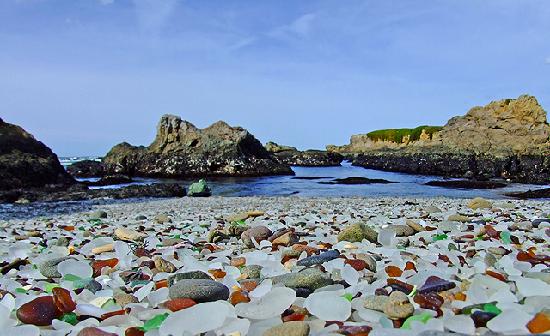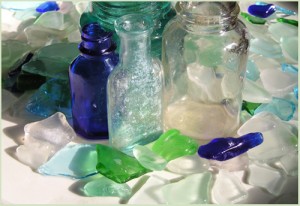‘Don’t throw that away! Keep it’; exclaimed Arthur, as he seemingly reached for a shard of a broken bottle on the classroom floor. Moments before, Mrs. Sigh, Arthur’s teacher, had accidently knocked the bottle to the ground. The once useful glass object now was spread across the floor, shattered into a multitude of potentially dangerous pieces destined for the landfill. ‘No’, answered Mrs. Sigh, not wanting Arthur to cut himself on the sharp edges of the broken bottle. Yet, Arthur insisted, that there was something special about this fragment, even though it had lost all its former usefulness. The debate went back and forth until Mrs. Sigh finally thought to ask, ‘Why?’ ‘Well’, Arthur excitedly offered, ‘I saw some sea glass at the beach – it looked neat; I want to see if I can make sea glass.’ ‘Wow’, Mrs. Sigh thought, ‘what a wonderful observation’, as her pragmatic approach met the same fate as the bottle.
And so it began – ‘Where did the glass come from, how did it get into the ocean? How do you think the glass got that way? What makes it “look neat”? Can we duplicate what has happened?’
‘Is it chemical; did it dissolve, was it affected by acid; is it physical: did waves, sand, or wind smooth the edges? Is sea glass good for the ocean, what if an animal eats sea glass? …’
 And so it continued – the excitement and the experiments went on until sea glass was defined, detailed and created. But there was chemistry, and history, and physics, and weather, and biology, and learning, and art all along the way. Arthur inspired Mrs. Sigh to see something she had not seen before and Mrs. Sigh in turn opened worlds not thought of.
And so it continued – the excitement and the experiments went on until sea glass was defined, detailed and created. But there was chemistry, and history, and physics, and weather, and biology, and learning, and art all along the way. Arthur inspired Mrs. Sigh to see something she had not seen before and Mrs. Sigh in turn opened worlds not thought of.
Art inspires science, science encourages art.
Science and Art, together, seek out the answers to what creates the wonder.



